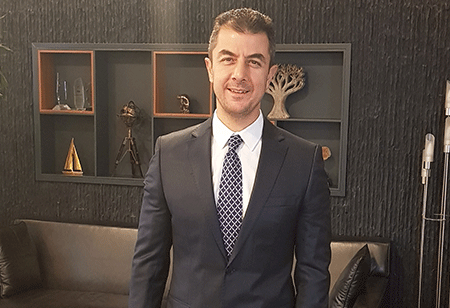
Volkan Oktar, a Civil Engineer with vast management experience in different scales of organizational structures and key leadership skills. He has been working in construction industry for more than 25 years. Trustworthiness, diligence, endurance, agility, fairness, progressiveness and devotion are some of his key personal qualities which led him to a considerable success and a remarkable network in construction industry.
In conversation with Prisila, correspondent, Asia Business Outlook Magazine. Volkan discusses balancing cost and environmental concerns while promoting sustainability in civil engineering, emphasizing effective communication with stakeholders.
The challenge of balancing cost and environmental impact in a way that prioritizes sustainability without compromising the project's budget.
This is the biggest challenge for sustainable construction concept. Construction is at top three CO2 emissions by Industry which means construction materials and services involve more CO2 emissions than many other services and materials. During the last decade a lot of R&D studies have been made and many new more sustainable methods and materials presented to construction industry. The main problem with new methods and materials is; they are more expensive than commonly used products and services because they require huge investments to produce (or implement). In today’s world, environment friendly and sustainable materials and methods haven’t been regulated by the governments yet. Therefore to sustain a fairly competetive industrial habitat, financial effects of sustainability in construction industry should be shared by all the stakeholders fairly, starting from the Clients and investors.
There are universal standarts and certifications like BREEAM and LEED which assist all the stakeholders of construction industry to constitute their requirements, spesifications and set of rules. As these standarts will be required by the Clients/Investors more commonly and adopted by the contractors, sustainable materials and services will prevail.
Companies which have higher scores in sustainability index must have higher financial incentives and advantages. Efforts and sources used for achieving sustainability goals shouldn’t hamper competitiveness of a company.
Enhancing sustainability in civil engineering through innovative technologies
Petroleum ,plastic, glass and metal based materials which are widely used can be produced from recycled materials which are widely used in construction industry especially in insulation works (water, heat and sound insulation, MEP works) Facade and Roof works , architectural Works etc.
Construction is at top three CO2 emissions by Industry which means construction materials and services involve more CO2 emissions than many other services and materials
3D printing needs to be developed more to be widely used in construction industry. When 3D printers will be able to print structural elements of the buildings they will reduce huge amount of waste production. 3D printers will perform works at dangerous works at unsafe locations.
Gaining support for sustainable initiatives in collaborative civil engineering projects.
This requires a team work. Without participation and adoptation of all team members it is almost impossible to achieve sustainability goals. We need to constitude new standarts and set of rules, we need to constitude new definition of success for our projects. Our priorities must align with our sustainability goals. Setting realistic goals, implementing an effective and balanced sustainability strategy, measuring the positive outcomes regulary and reporting the results to all the stakeholders should keep every team member on board and motivated.
"Multinational companies develop a huge know-how and library of Norms and Regulations during their years of experience in different countries."
Aligning civil engineering designs with local environmental regulations and standards.
Multinational companies develop a huge know-how and library of Norms and Regulations during their years of experience in different countries. General frame of needs and requirements is drawn by the Client (state or private owned entity) in the very beginning. Civil Engineering project designs always base on Client expectations while adhering with the local regulations. Most of the multinational companies use local consultants for assuring regulatory compliance during their activities from the design stage untill putting the project into operation.
Sustainable strategies to minimize resource consumption and promote recycling in civil engineering.
It is vital to plan and implement a comprehensive HSE culture for the projects which must be incentivized by the top management and adopted to the last member of the team. A comprehensive HSE plan coordinates and controls all stages and processes throughout design, procurement and implementation taking into account using sustainable materials and waste management (incl. Recycling).
We use cookies to ensure you get the best experience on our website. Read more...